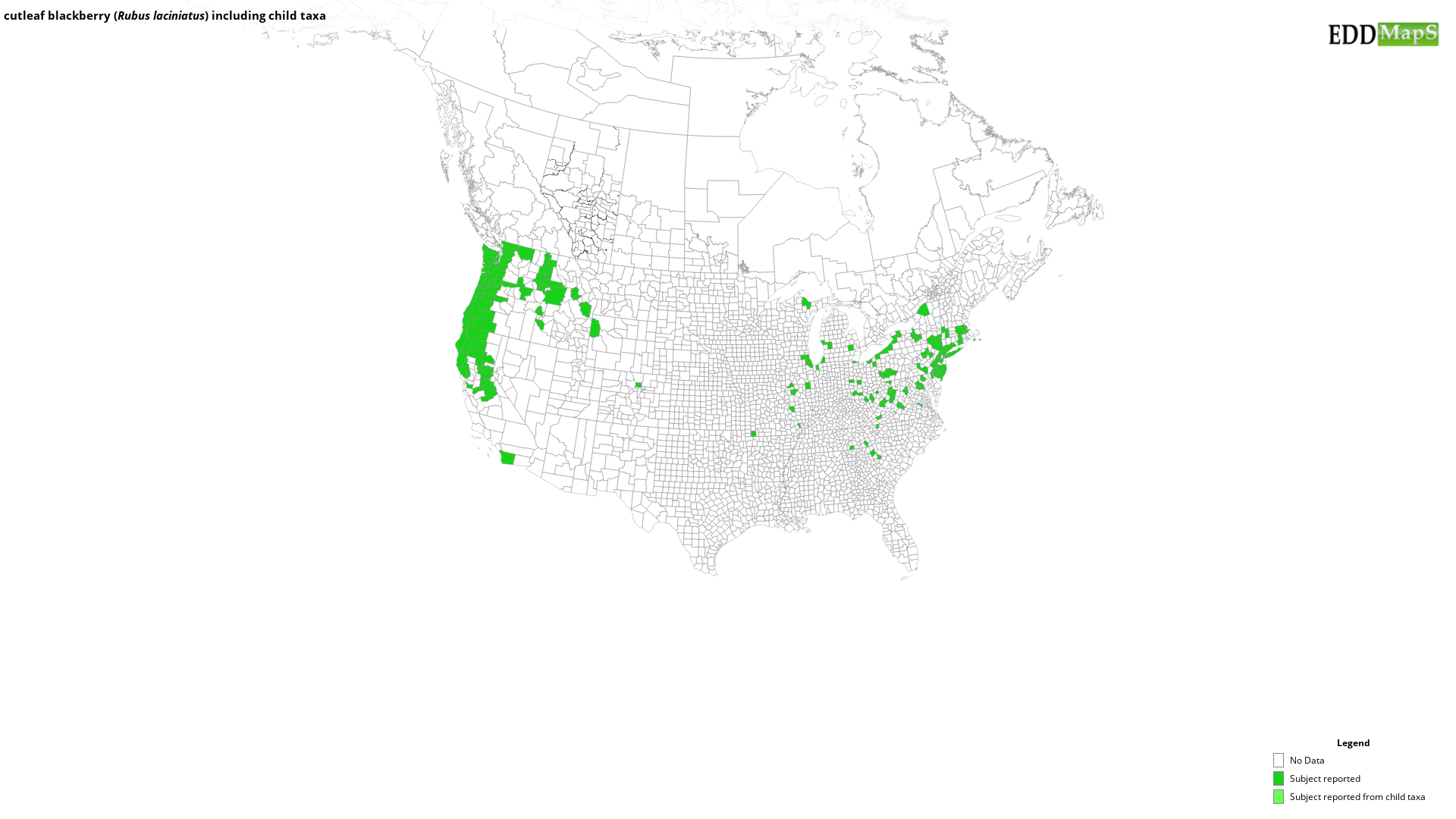cutleaf blackberry
(Rubus laciniatus)
This species is Introduced in the United States
Appearance
Rubus laciniatus is a perennial vine or shrub that can grow up to 9.8 ft. (3 m) tall.
Foliage
Leaves are palmately compound and alternate with five serrate, lobed, serrate leaflets. Stems are covered in broad, curved thorns that are red at the base and yellow at the tip. The leaves are a good identifying characteristic for this species.
Flowers
Flowers are white to dark pink with 5, 0.8-1 in. (2-2.5 cm) long, petals. Stamens are white-pink and the pistils are greenish pink. Flowering occurs from June to July.
Fruit
Fruit are black, shiny, 0.6-1 in. (1.5-2.5 cm) long with very small seeds. The fruit is edible, sweet, and juicy. Fruit develops from July to October.
Ecological Threat
Rubus laciniatus can be found on thinned areas, fields, pastures, and disturbed forest lines. It is native to Eurasia.
Selected Images
Maps
EDDMapS Distribution - This map is incomplete and is based only on current site and county level reports made by experts, herbaria, and literature. For more information, visit www.eddmaps.org
State Lists - This map identifies those states that have this species on their invasive species list or law.
Invasive Listing Sources
- John Randall, The Nature Conservancy, Survey of TNC Preserves, 1995.
- Native Plant Society of Oregon, 2008
- New Jersey Invasive Species Strike Team 2017 Invasive Species List
- Reichard, Sarah. 1994. Assessing the potential of invasiveness in woody plants introduced in North America. University of Washington Ph.D. dissertation.
- Washington Noxious Weeds
- WeedUS - Database of Plants Invading Natural Areas in the United States
Taxonomic Rank
| Domain: Eukarya |
| Kingdom: Plantae |
| Phylum: Magnoliophyta |
| Class: Magnoliopsida |
| Superorder: Rosanae |
| Order: Rosales |
| Family: Rosaceae |
| Genus: Rubus |
| Rubus laciniatus |
References
Common Name Reference: USDA, NRCS. 2010. The PLANTS Database. National Plant Data Center, Baton Rouge, LA, USA.
Scientific Name Reference: USDA, NRCS. 2010. The PLANTS Database. National Plant Data Center, Baton Rouge, LA, USA.


